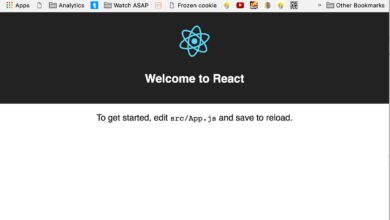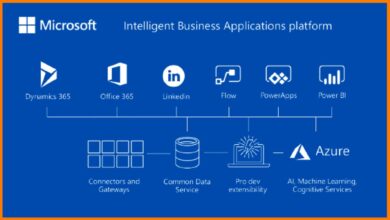Azure Apps: 7 Powerful Insights to Master Cloud Innovation
Ever wondered how top companies deploy apps at lightning speed? The secret often lies in Azure apps—Microsoft’s game-changing cloud platform that’s redefining how we build, scale, and manage software. Let’s dive into what makes them so powerful.
What Are Azure Apps and Why They Matter

Azure apps refer to a suite of cloud-based services offered by Microsoft Azure that enable developers and businesses to build, deploy, and manage applications across a global network of data centers. These aren’t just standalone tools—they’re part of a larger ecosystem designed for flexibility, scalability, and enterprise-grade performance.
Defining Azure Apps in Modern Development
Azure apps encompass a wide range of services, including App Services, Functions, Logic Apps, and Container Instances. Each serves a unique role in the application lifecycle. For example, Azure App Service allows you to host web apps, mobile backends, and RESTful APIs without managing infrastructure.
- Supports multiple languages: .NET, Java, Node.js, Python, PHP
- Integrated DevOps capabilities with CI/CD pipelines
- Automatic scaling based on traffic demand
This flexibility makes Azure apps ideal for startups and enterprises alike. Whether you’re launching a simple website or a complex microservices architecture, Azure provides the tools to do it efficiently.
The Evolution of Cloud Applications
The shift from on-premise servers to cloud-native applications has been dramatic. Azure apps sit at the forefront of this transformation. In the early 2010s, deploying an app meant provisioning physical servers, configuring networks, and managing updates manually. Today, with Azure apps, all of that is abstracted away.
“Cloud computing is not about replacing servers—it’s about reimagining how software is built and delivered.” — Satya Nadella, CEO of Microsoft
This evolution has led to faster time-to-market, reduced operational costs, and improved reliability. Azure apps leverage decades of Microsoft’s enterprise experience while embracing modern practices like serverless computing and containerization.
Core Components of Azure Apps Ecosystem
To truly understand Azure apps, you need to explore the key services that power them. These components work together seamlessly, allowing developers to choose the right tool for each part of their application.
Azure App Service: The Backbone of Web Apps
Azure App Service is one of the most widely used components in the Azure apps portfolio. It supports web apps, mobile apps, and API apps with built-in capabilities for authentication, monitoring, and deployment slots.
- Deployment slots allow for staging environments (e.g., dev, test, prod)
- Built-in SSL certificates and custom domain support
- Integration with Azure Active Directory for secure access
For teams using GitHub or Azure DevOps, App Service offers native integration for continuous deployment. This means every code push can automatically trigger a rebuild and redeploy—streamlining the development workflow.
Azure Functions: Embracing Serverless Architecture
Azure Functions enables event-driven, serverless computing. Instead of running an entire application 24/7, you run small pieces of code (functions) in response to triggers like HTTP requests, database changes, or queue messages.
- Pay only for execution time (no idle costs)
- Supports timers, queues, and third-party service hooks
- Can be written in C#, JavaScript, Python, and more
This model is perfect for background tasks, such as processing uploaded images or sending email notifications. By integrating Azure Functions into your app architecture, you reduce infrastructure overhead and improve cost efficiency.
Azure Logic Apps: Automating Business Workflows
While Azure Functions handle code-level automation, Azure Logic Apps focus on workflow automation. They allow you to connect disparate systems—like Salesforce, Office 365, and SQL databases—without writing code.
- Visual designer for drag-and-drop workflow creation
- Pre-built connectors for hundreds of SaaS applications
- Enterprise-grade security and compliance
For example, a company might use Logic Apps to automatically create a new customer record in Dynamics 365 when someone signs up via a web form. This eliminates manual data entry and reduces errors.
Benefits of Using Azure Apps for Enterprises
Organizations across industries—from healthcare to finance—are adopting Azure apps to accelerate digital transformation. The benefits go beyond technical capabilities; they impact business agility, security, and ROI.
Scalability and Performance on Demand
One of the biggest advantages of Azure apps is their ability to scale automatically. Whether you’re handling 100 users or 10 million, Azure can adjust resources in real time.
- Auto-scaling rules based on CPU, memory, or request rates
- Global distribution through Azure’s 60+ regions
- Content delivery via Azure CDN for faster load times
This ensures consistent performance even during traffic spikes—critical for e-commerce sites during holiday sales or media platforms during live events.
Enhanced Security and Compliance
Security is baked into every layer of Azure apps. Microsoft invests over $1 billion annually in cybersecurity and employs more than 3,500 security experts.
- Encryption at rest and in transit by default
- Advanced threat protection with Azure Security Center
- Compliance with GDPR, HIPAA, ISO 27001, and more
For regulated industries, this means peace of mind. Azure apps help organizations meet strict data protection requirements without sacrificing innovation.
Cost Efficiency and Operational Simplicity
Traditional IT infrastructure requires significant upfront investment and ongoing maintenance. Azure apps operate on a pay-as-you-go model, turning capital expenses into operational ones.
- No need to purchase or maintain physical servers
- Granular billing down to the second for some services
- Cost management tools with forecasting and alerts
According to a Forrester study, enterprises using Azure see a 63% reduction in infrastructure costs over three years. That’s a massive win for CFOs and CTOs alike.
How to Get Started with Azure Apps
Starting with Azure apps doesn’t require a massive team or budget. Microsoft offers a free tier and extensive learning resources to help beginners get up to speed quickly.
Setting Up Your First Azure Account
The first step is creating an Azure account. You can sign up at azure.microsoft.com/free and get $200 in credits to explore services for 30 days.
- Access to most Azure services during the free trial
- 12 months of free popular services like App Service and Functions
- Always-free tiers for certain features (e.g., 1 million Function executions per month)
Once registered, you’ll land in the Azure portal—a web-based interface where you can manage all your apps and resources.
Deploying Your First Web App
Let’s walk through deploying a simple web app using Azure App Service:
- Log in to the Azure portal
- Click “Create a resource” and search for “App Service”
- Choose your subscription and create a new resource group
- Select a runtime stack (e.g., .NET, Node.js)
- Configure your app name and region
- Deploy code from GitHub, local machine, or a template
Within minutes, your app will be live on the internet with a default yourapp.azurewebsites.net URL. From there, you can customize domains, set up SSL, and monitor performance.
Leveraging Azure DevOps for CI/CD
For teams serious about continuous delivery, Azure DevOps integrates seamlessly with Azure apps. You can automate testing, staging, and production deployments using pipelines.
- Create build pipelines that compile and package your code
- Set up release pipelines with approval gates
- Monitor deployments with real-time logs and dashboards
This level of automation reduces human error and accelerates release cycles—key for staying competitive in fast-moving markets.
Azure Apps vs. Competitors: A Comparative Analysis
While Azure apps are powerful, they aren’t the only player in the cloud space. Let’s compare them with Amazon Web Services (AWS) and Google Cloud Platform (GCP) to understand where Azure shines.
Feature Comparison: Azure vs AWS vs GCP
All three platforms offer similar core services—compute, storage, databases, and AI tools. However, differences emerge in integration, pricing, and enterprise support.
| Feature | Azure | AWS | GCP |
|---|---|---|---|
| Hybrid Cloud Support | Strong (Azure Arc, Stack) | Moderate (Outposts) | Limited |
| Enterprise Integration | Excellent (Microsoft 365, Active Directory) | Good | Fair |
| Pricing Model | Pay-as-you-go + Reserved Instances | Pay-as-you-go + Savings Plans | Pay-as-you-go + Sustained Use Discounts |
| Global Regions | 60+ | 30+ (across 100+ availability zones) | 40+ |
Azure stands out for organizations already using Microsoft products. If your company relies on Office 365 or Windows Server, Azure apps integrate natively, reducing friction and training costs.
When to Choose Azure Apps Over Alternatives
Azure apps are particularly advantageous in the following scenarios:
- Existing Microsoft Environment: If your business uses Active Directory, SQL Server, or Dynamics 365, Azure provides seamless integration.
- Hybrid Cloud Needs: Azure Stack and Azure Arc allow you to run Azure services on-premises or in multi-cloud environments.
- Regulated Industries: Azure offers more compliance certifications than any other cloud provider—over 140 in total.
However, if you’re building AI-heavy applications or need cutting-edge data analytics, GCP might be a better fit. For startups wanting maximum flexibility, AWS remains a strong contender due to its vast ecosystem.
Real-World Use Cases of Azure Apps
Many global brands rely on Azure apps to power their digital operations. Here are a few notable examples:
- BMW: Uses Azure IoT Hub and Azure Functions to collect and analyze data from connected vehicles.
- ASOS: Migrated its e-commerce platform to Azure App Service for better scalability during peak shopping seasons.
- Maersk: Leverages Azure Logic Apps to automate logistics workflows across 130 countries.
These cases show that Azure apps aren’t just for tech companies—they’re transforming traditional industries by enabling smarter, faster, and more resilient operations.
Advanced Features and Future Trends in Azure Apps
Microsoft is constantly innovating within the Azure apps ecosystem. New features are released regularly, pushing the boundaries of what’s possible in cloud computing.
AI Integration with Azure OpenAI and Cognitive Services
One of the most exciting developments is the integration of AI into Azure apps. With Azure AI Services, developers can add natural language processing, computer vision, and speech recognition to their apps with just a few lines of code.
- Integrate ChatGPT via Azure OpenAI Service
- Use anomaly detection for predictive maintenance
- Build voice-enabled interfaces for customer service bots
This democratizes AI, making advanced capabilities accessible even to small development teams.
Containerization and Kubernetes with Azure Kubernetes Service (AKS)
Modern applications are increasingly built using containers. Azure Kubernetes Service (AKS) simplifies the deployment, management, and scaling of containerized applications.
- Managed Kubernetes control plane (no need to manage masters)
- Integration with Helm, Istio, and other DevOps tools
- Auto-scaling and self-healing clusters
By combining AKS with Azure App Service and Functions, teams can build hybrid architectures that balance simplicity and control.
The Rise of Low-Code and No-Code Platforms
Microsoft is also investing heavily in low-code solutions like Power Apps, which integrate directly with Azure apps. This allows business analysts and non-developers to create functional applications without writing code.
- Drag-and-drop interface for form and workflow design
- Connect to Azure SQL, SharePoint, and external APIs
- Enterprise-grade governance and security
This trend is accelerating digital transformation by empowering more people to contribute to app development.
Best Practices for Optimizing Azure Apps
Getting started is easy, but mastering Azure apps requires attention to detail. Following best practices ensures your applications are secure, performant, and cost-effective.
Implementing Monitoring and Diagnostics
Use Azure Monitor and Application Insights to track app performance, detect issues, and gain user behavior insights.
- Set up alerts for high CPU, memory, or error rates
- Visualize dependencies between services
- Analyze logs with Kusto Query Language (KQL)
Proactive monitoring helps you resolve problems before users notice them.
Securing Your Azure Apps
Security should never be an afterthought. Follow the principle of least privilege and use Azure Role-Based Access Control (RBAC).
- Assign roles like Reader, Contributor, or Owner based on need
- Enable multi-factor authentication (MFA) for all admin accounts
- Regularly audit access logs and permissions
Additionally, use Azure Key Vault to store secrets like API keys and database passwords securely.
Optimizing Costs with Right-Sizing and Automation
It’s easy to overspend on cloud resources if you’re not careful. Use Azure Cost Management to identify underutilized resources.
- Right-size VMs and app plans based on actual usage
- Schedule non-production environments to shut down at night
- Use reserved instances for predictable workloads
Automation scripts can help enforce these policies across large environments.
What are Azure apps?
Azure apps are a collection of cloud services from Microsoft Azure that allow developers to build, deploy, and manage applications. These include App Service, Functions, Logic Apps, and more, all designed for scalability, security, and integration with other Microsoft services.
How much does Azure App Service cost?
Azure App Service has a free tier for basic websites and paid tiers starting at around $13/month. Pricing depends on features like scaling, SSL, and deployment slots. You only pay for what you use, with granular billing options.
Can I use Azure apps with GitHub?
Yes, Azure apps integrate natively with GitHub. You can set up continuous deployment so that every code push to your repository automatically triggers a rebuild and redeploy of your app.
Is Azure better than AWS for enterprise apps?
It depends on your environment. If you already use Microsoft products like Office 365 or Active Directory, Azure offers superior integration. AWS has a broader service catalog, but Azure excels in hybrid cloud and compliance.
How do I secure my Azure apps?
Use Azure Security Center, enable MFA, apply RBAC, encrypt data, and store secrets in Azure Key Vault. Regular audits and threat monitoring are also essential for maintaining security.
Microsoft’s Azure apps are more than just a cloud platform—they’re a complete ecosystem for modern application development. From serverless functions to AI-powered services, they offer unparalleled flexibility and power. Whether you’re a solo developer or part of a global enterprise, Azure apps provide the tools to innovate faster, scale smarter, and secure your digital future. The cloud revolution is here, and Azure is leading the charge.
Further Reading:









